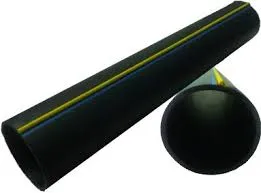Dec . 03, 2024 10:34 Back to list
hdpe poly pipe
Understanding HDPE Poly Pipe Features, Applications, and Benefits
High-Density Polyethylene (HDPE) pipes have become an essential component in various industries due to their unique properties and versatile applications. This article aims to provide a comprehensive overview of HDPE poly pipes, focusing on their characteristics, advantages, and multiples uses in modern infrastructure.
What is HDPE?
High-Density Polyethylene (HDPE) is a thermoplastic made from petroleum. Its chemical structure provides excellent strength-to-density ratio, making it suitable for a wide range of applications. HDPE is known for its durability, resistance to impact, and ability to withstand harsh environmental conditions.
Features of HDPE Poly Pipe
1. Durability One of the most significant advantages of HDPE pipes is their exceptional durability. They can resist corrosion, abrasion, and impact, which makes them suitable for high-pressure applications.
2. Flexibility and Lightweight HDPE pipes are flexible and lightweight compared to traditional materials like metal. This allows for easier handling and installation, reducing labor costs and time.
3. Chemical Resistance HDPE is resistant to many chemicals, making it ideal for transporting a variety of fluids without risk of contamination or degradation.
4. Leak-Free Joints HDPE pipes can be joined using various methods, such as butt fusion or electrofusion. This creates strong, leak-free joints that can withstand pressure and external forces.
5. Low Friction Coefficient The smooth interior surfaces of HDPE pipes result in reduced friction, leading to lower energy costs when transporting fluids.
Applications of HDPE Poly Pipe
HDPE poly pipes are used in a myriad of applications, including
1. Water Supply Systems HDPE pipes are widely used in municipal water supply systems due to their ability to withstand high pressure and prevent leakage, ensuring a reliable water supply.
hdpe poly pipe

2. Irrigation In agriculture, HDPE pipes are used for drip and sprinkler irrigation systems. Their flexibility allows for easy installation around crops, optimizing water usage.
3. Sewage and Waste Management HDPE's chemical resistance makes it an excellent choice for sewer and drainage systems, as it can safely transport wastewater without fear of deterioration.
4. Industrial Applications Many industries utilize HDPE pipes for transporting chemicals, gases, and other materials due to their robustness and reliability.
5. Telecommunications HDPE pipes serve as conduits for fiber optic cables, protecting sensitive communications infrastructure from environmental damage.
Benefits of Using HDPE Poly Pipe
1. Cost-Effectiveness While the initial investment may be higher compared to traditional materials, the long lifespan and low maintenance costs of HDPE pipes result in significant savings over time.
2. Sustainability HDPE is recyclable, which contributes to sustainable practices in various industries. Its longevity also means fewer replacements, reducing waste.
3. Environmental Resistance HDPE pipes are resistant to UV rays and various environmental elements, making them suitable for both above-ground and underground applications.
4. Enhanced Flow Efficiency The smooth interior of HDPE pipes minimizes turbulence and maximizes flow rates, making them more efficient than other pipe materials.
5. Ease of Installation The lightweight nature of HDPE pipes simplifies transportation and installation, often resulting in reduced labor costs.
Conclusion
HDPE poly pipes have revolutionized the piping industry through their superior characteristics and wide range of applications. From municipal water supply systems to agricultural irrigation and industrial uses, the benefits of using HDPE are clear. As industries continue to seek durable, cost-effective, and environmentally-friendly solutions, the demand for HDPE pipes is likely to grow, reinforcing their significance in modern infrastructure. Whether you are involved in construction, agriculture, or waste management, understanding and utilizing HDPE poly pipe can lead to enhanced performance and sustainability.
-
PVC Transparent Sheet Roll - Durable & Flexible PVC Plastic Sheet Roll for Industrial & Home Use
NewsJun.24,2025
-
High-Quality PVC PPR Pipes and Fittings Durable ERA PPR Solutions
NewsJun.10,2025
-
High-Quality Large HDPE Sheets & Large Diameter PVC Pipe Durable Large PVC Pipe Supplier
NewsJun.10,2025
-
High Density Polyethylene Cutting Board - Durable & Food Safe
NewsJun.09,2025
-
3 Inch PVC Pipe for Durable Irrigation Affordable & Reliable
NewsJun.09,2025
-
Premium PPR Plastic Water Pipe Fittings - Durable & Leak-Free
NewsJun.09,2025

